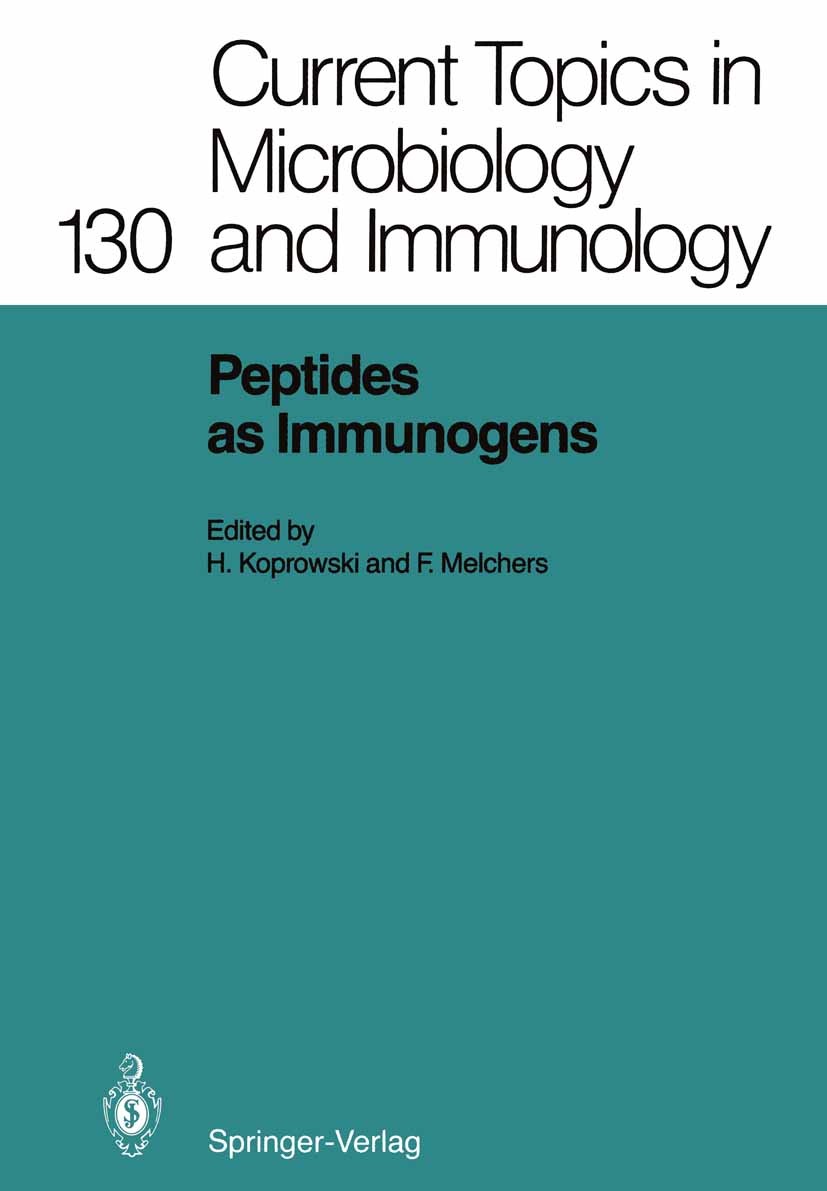| 書目名稱 | Peptides as Immunogens | | 編輯 | Hilary Koprowski,Fritz Melchers | | 視頻video | http://file.papertrans.cn/744/743545/743545.mp4 | | 叢書名稱 | Current Topics in Microbiology and Immunology | | 圖書封面 |  | | 描述 | The humoral response of the immune system to a foreign antigen usually requires the recognition of two antigenic determinants. The one, called the carrier, is recognized by T-Iymphocytes, the other, called the hapten, by B-Iympho- cytes. As a consequence, T - and B-Iymphocytes proliferate, B-Iymphocytes produce hapten-specific antibodies, and the system develops memory to the antigens. It was long thought that antigens would form a bridge to mediate the cooperation of T - and B-Iymphocytes. However, it now appears that antigens are broken down to fragments which then act as carrier determinants for T -lymphocytes. The cells which originally process antigen are called an- tigen-presenting cells. They have phagocytic properties. They can take up and degrade antigens, in the case of pro- teins to peptides. The peptides of protein antigens reappear on the surface of the antigen-presenting cells, where they must become associated with membrane proteins encoded by genes of the major histocompatibility complex (MHC) in order to be recognized by T-Iymphocytes. To activate helper T-Iym- phocytes which cooperate in antibody responses, MHC class II molecules have to be expressed on the surfac | | 出版日期 | Conference proceedings 1986 | | 關(guān)鍵詞 | antibody; antigen; histocompatibility; immune system; lymphocytes; protein; proteins | | 版次 | 1 | | doi | https://doi.org/10.1007/978-3-642-71440-5 | | isbn_softcover | 978-3-642-71442-9 | | isbn_ebook | 978-3-642-71440-5Series ISSN 0070-217X Series E-ISSN 2196-9965 | | issn_series | 0070-217X | | copyright | The Editor(s) (if applicable) and The Author(s), under exclusive license to Springer-Verlag GmbH, DE |
The information of publication is updating

|
|
 |Archiver|手機(jī)版|小黑屋|
派博傳思國際
( 京公網(wǎng)安備110108008328)
GMT+8, 2025-10-12 16:51
|Archiver|手機(jī)版|小黑屋|
派博傳思國際
( 京公網(wǎng)安備110108008328)
GMT+8, 2025-10-12 16:51


